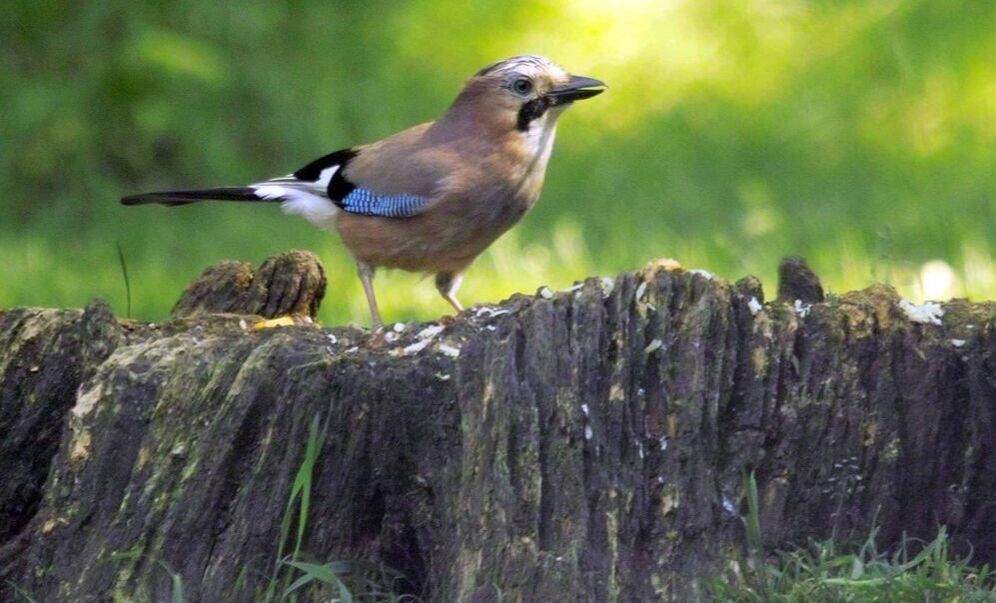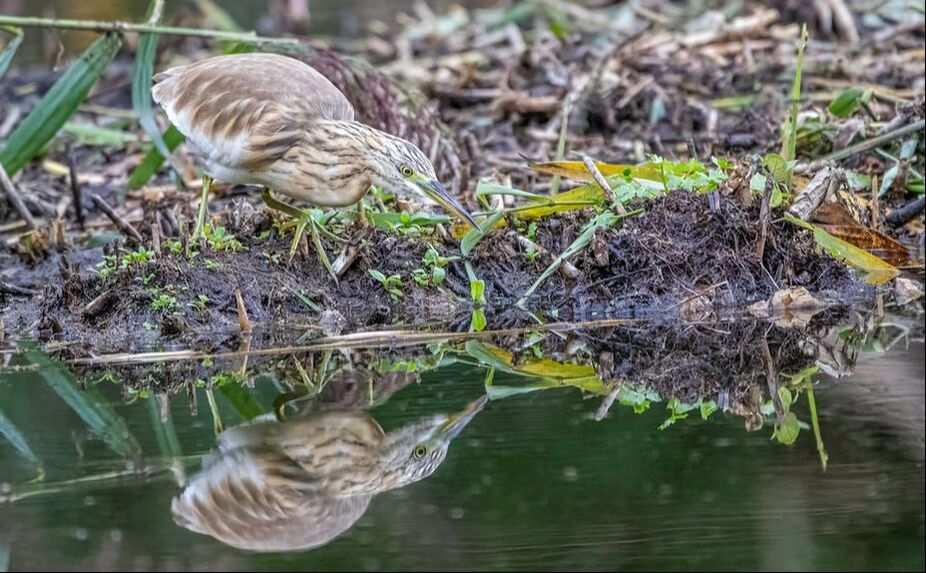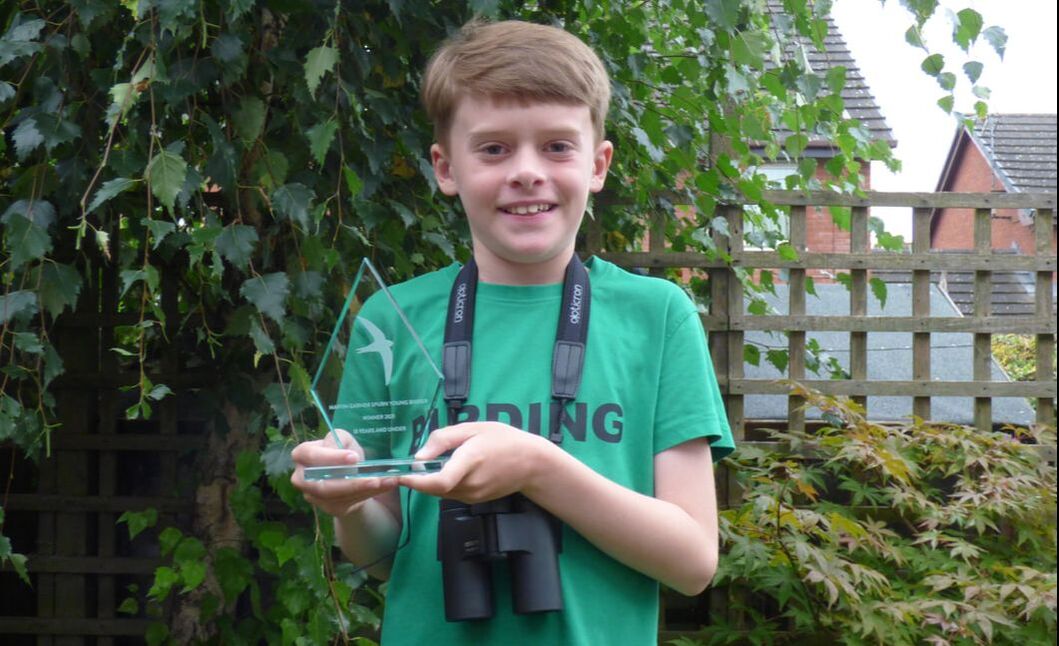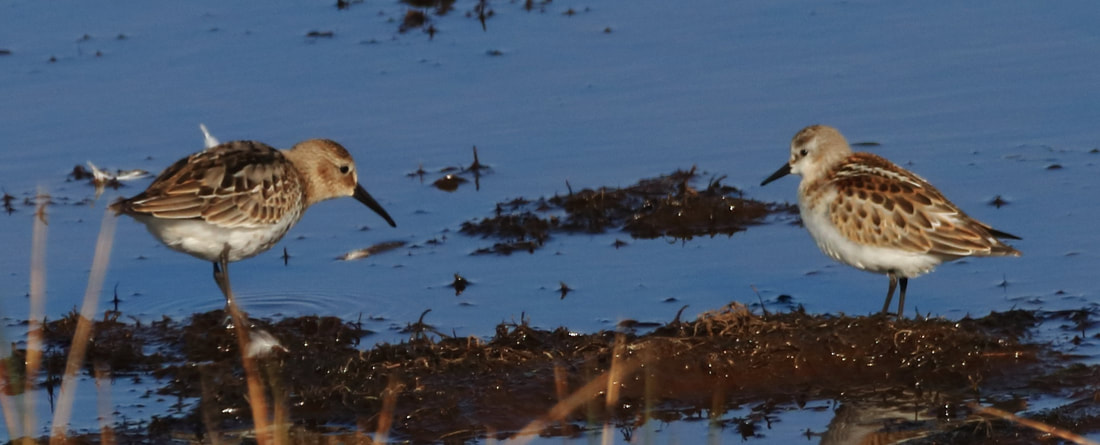|
Jays are on the move! Small flocks have been reported away from the woodlands in which they spend most of the year. Over the weekend, there were 14 over the Great Orme, a flock of 23 over the Dyfi estuary and groups of up to seven at the western end of Llŷn, where Jays are usually scarce. Naturalists in eastern Britain report that the acorn crop is sparse, so Jays may be roaming the countryside in search of oak trees, since these are a crucial part of their diet. If you see any large counts, let me know.
The Squacco Heron remained for a second week in the wetlands around Gronant, and a Wilson’s Phalarope from North America was a fine way to celebrate the tenth anniversary of RSPB’s Burton Mere Wetlands. Of the 13 Welsh records of this wader, this was the fifth in Flintshire. A Rose-coloured Starling remains on the rooftops of Llandudno Junction, and nearby two Garganeys and a Spotted Redshank are at RSPB Conwy. The first divers of the winter were seen off our coast, with a Black-throated and Great Northern Divers in Anglesey’s Beddmanarch Bay and a Red-throated Diver retaining some of its summer plumage off Llandudno, while a Slavonian Grebe is off Llanfairfechan. Low water levels on Llyn Alaw have attracted huge numbers of waterbirds, among them a Pectoral Sandpiper, Wood Sandpipers, Little Stints, Garganey and eight Great White Egrets. It has been a good breeding season for Black-tailed Godwits in Iceland, judging by the large number of young birds in flocks migrating south this week. I’ve seen groups feeding at RSPB Conwy and Malltraeth Cob, but a flock of 19 over the Llŷn was more unusual. Also arriving from Iceland are flocks of Pink-footed Geese, heading to winter on the Dee estuary, and the first Redwings of the autumn were heard over Anglesey last Tuesday (21 September).
0 Comments
A rare heron has made an unexpected appearance in northeast Wales, but proved elusive for birdwatchers hoping to see it. Photographers at North Wales Wildlife Trust’s Big Pool Wood nature reserve shared news of the Squacco Heron after finding it feeding on frogs, fish and dragonflies at the side of the pond. Its streaky brown plumage helps it to remain camouflaged among waterside vegetation, but with completely white wing feathers, it is far more obvious in flight. However, it has ranged widely, frequently hiding in ditches that criss-cross the fields behind the sand dunes.
This is only the fourth Squacco Heron recorded in the region, according to The Birds of Wales published earlier this year. The first was shot on the banks of the River Conwy at Furnace Farm in 1828, and there have been two sightings on Anglesey, both near Cemlyn, in 1988 and 2015. Squacco Herons nest in wetlands around the Mediterranean basin, where they have benefited from rice cultivation, and have expanded north into France’s Loire Valley in recent decades. The unusual English name derives from the Italian name Sguacco, which perhaps describes its harsh ‘squawk’ call. A young Rose-coloured Starling is among a flock of Starlings roving the rooftops of Llandudno Junction while another remains at Amlwch, and a Turtle Dove is in Cemaes Bay village. A Dotterel was a surprise find on Tal-y-bont beach near Barmouth last week and another called over Penrhyn Bay in the early hours. A Curlew Sandpiper was in Pwllheli harbour on Sunday, a Firecrest and Black Tern were seen on Bardsey, and a Black Redstart and Firecrest were near the Great Orme’s St Tudno’s Church. Garganeys remain at RSPB Conwy, Burton Mere Wetlands and the 'mitigation pool' adjacent to Anglesey’s Inland Sea, with four on Cefni Reservoir last week. Since its inception in 1929, this column has been primarily about the birds, but this week I’m making an exception, to feature a birdwatcher. Just as Emma Radacanu stepped onto court in New York last Saturday, 10-year old Levi Gravett walked off stage at Spurn Migration Festival in Yorkshire as the Martin Garner Spurn Young Birder 2021, a competition co-organised by the British Trust for Ornithology.
The first ever Welsh winner of the title, Levi had been selected for the finals of the under-13 category only a few weeks previously. The competition involved going out with the judges into different habitats around Spurn Bird Observatory, identifying at least three birds in each and answering questions about them. During the seabird session, Levi correctly identified a Long-tailed Skua, a relatively scarce species that he’d never seen previously. In addition to the field challenge, finalists had to answer questions in what Levi called “the dreaded lab-test”. As well as identifying birds by song and naming the different parts of bird plumage, Levi had to explain the reasons that Turtle Doves are declining and Red Kites are increasing. Levi only took up birdwatching at the start of lockdown in March 2020, going for family walks in the woods near his Penrhyn Bay home, where he was captivated by seeing both Green and Great Spotted Woodpeckers. Levi’s success is being celebrated by his friends at Ysgol Glanwydden, which has organised a special assembly to hear about his birdwatching exploits, that are also shared on his Birding With Levi Twitter and YouTube channels. Expect to hear more from this enthusiastic and knowledgeable youngster… Levi’s win came in the same week that the Welsh Ornithological Society launched its Young Birder membership, offering annual digital subscription to the organisation for just £5 for anyone aged under 25. While Levi was being grilled in Yorkshire, birdwatchers in North Wales were enjoying autumn migration, including a Whinchat on the Great Orme, Curlew Sandpipers at Pwllheli and Porthmadog’s Llyn Bach, three Wrynecks on Bardsey and another with a Common Rosefinch at Porth Meudwy. A juvenile Rose-coloured Starling is at Amlwch, Garganeys at RSPB Conwy, Llyn Maelog and on a pool by Anglesey’s Inland Sea, and Little Stints at RSPB Conwy, Point of Ayr and Morfa Madryn. A night-time recorder picked up a Ring Ouzel over Penrhyn Bay in the early hours of Sunday and a Dotterel early on Monday. Little Stints are the tiniest shorebird that we see regularly in Wales, the same length as a Robin, but a bird that travels from the coastal tundra of northern Russia to sub-Saharan Africa each autumn. In September, we mostly see youngsters that hatched just a couple of months ago, with pale ‘tramlines’ down the back. Breeding success in the Arctic is related to the lemming population: when there are fewer of the little mammals, predators eat more wader chicks. In recent years, no more than 60 have been recorded in Wales each autumn, far short of numbers in the 1990s: on 26 September 1993, a flock of 102 Little Stints were at Gronant, near Prestatyn – that must have been quite a sight!
This week has seen Little Stints scattered across North Wales, including six at Malltraeth Cob pool, three in Beddmanarch Bay, and others at RSPB Burton Mere Wetlands, Conwy and the Alaw estuary. Good years for Little Stints can also be good for Curlew Sandpipers, which have been seen at Malltraeth, Traeth Dulas, the Alaw estuary, Foryd Bay and Glan-y-Môr Elias near Llanfairfechan. Other waders in the region include Ruff at RSPB Cors Ddyga and on the Afon Glaslyn, and it’s been a good week for Greenshanks: 10 on Pwll McAlpine, 15 on the Alaw estuary and 16 at Aber Ogwen. Two Garganeys and a Great White Egret have been at RSPB Conwy, with another egret at Llyn Maelog. A Scaup is unseasonally early in Foryd Bay, 89 Mediterranean Gulls were counted on Anglesey’s Inland Sea, while a Stone-curlew was reported from the golf course at Morfa Conwy. A Blyth’s Reed Warbler was seen briefly on Bardsey, with the island bird observatory also recording a Wryneck and a fall of smaller migrants including 49 Spotted Flycatchers, a Barred Warbler and an Icterine Warbler. |
Bird notesA weekly update of bird sightings and news from North Wales, published in The Daily Post every Thursday. Archives
July 2024
Categories |




 RSS Feed
RSS Feed
